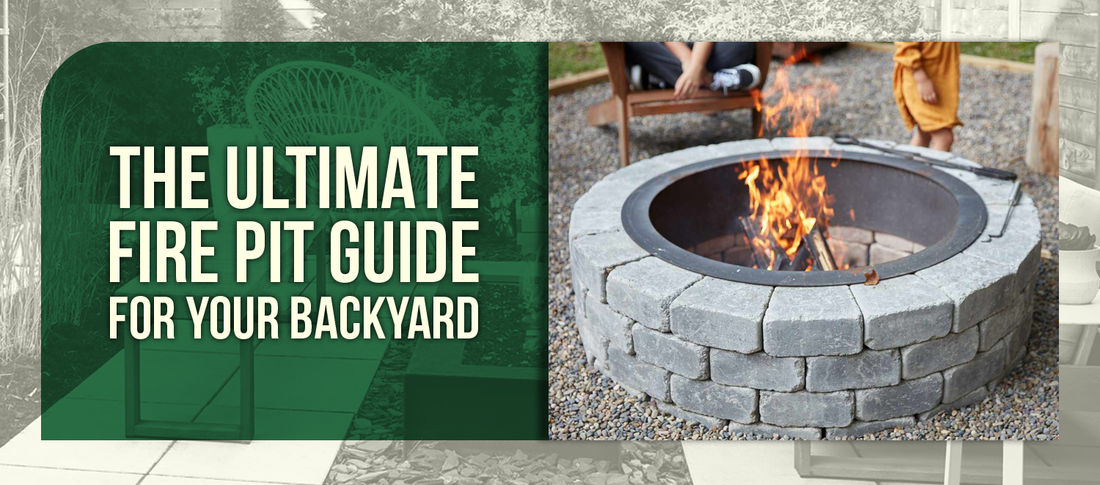
The Ultimate Fire Pit Guide for Your Backyard
Transform your outdoor space into a cozy gathering place with the perfect fire pit setup
Learn everything you need to know about placement, safety, and choosing the right fire pit for your home
Choosing the Perfect Location for Your Fire Pit
The key to fire pit success starts with proper placement and understanding local regulations
Check Local Fire Regulations
Before installing any fire pit, research your local fire codes and homeowner association rules. Many areas have specific requirements for fire pit placement, size limitations, and seasonal burn restrictions. Contact your local fire department or building authority to ensure compliance.
Maintain Safe Distances
Position your fire pit at least 10-25 feet away from structures, overhanging branches, and property lines. Consider wind patterns in your yard and choose a location that provides natural wind protection while ensuring proper ventilation.
Prepare the Ground Surface
Select level ground and create a stable, fire-resistant base. Remove all flammable materials like dry grass, leaves, and mulch from the surrounding area. Consider installing a gravel pad or concrete base for permanent installations.

Understanding Different Fire Pit Types
From portable bowls to permanent installations, choose the right style for your needs
Wood-Burning Fire Pits
Classic choice offering authentic crackling sounds and natural ambiance. Requires seasoned hardwood and produces ash that needs regular cleaning. Perfect for those who enjoy the traditional campfire experience.
Best For:
- Authentic campfire atmosphere
- Cooking and roasting
- Lower ongoing fuel costs
- Off-grid locations
Gas Fire Pits
Convenient, clean-burning option with instant ignition and precise flame control. Available in natural gas or propane models. Minimal maintenance required with consistent heat output.
Best For:
- Easy operation and cleanup
- Consistent flame control
- Areas with fire restrictions
- Modern outdoor designs
Essential Fire Pit Safety Guidelines
Protect your family and property with these critical safety practices
⚠️ Safety First
Never leave a fire unattended, and always have water or sand nearby for emergency extinguishing. Check weather conditions before lighting any fire.
Before Lighting
- Clear 10-foot radius of flammable debris
- Check wind speed and direction
- Have fire extinguishing materials ready
- Inspect fire pit for cracks or damage
- Review local burn restrictions
During Use
- Never leave fire unattended
- Keep flames at manageable height
- Supervise children and pets closely
- Avoid accelerants like gasoline
- Use only seasoned, dry wood
After Use
- Allow fire to burn down naturally
- Douse completely with water
- Stir ashes and douse again
- Wait until completely cool
- Dispose of ashes safely
Fire Pit Materials and Construction
Understanding materials helps you choose a durable, safe fire pit
Steel Fire Pits
Affordable and portable option available in various designs. Look for powder-coated or rust-resistant finishes. Steel conducts heat well but may develop rust over time without proper care.
Cast Iron Options
Excellent heat retention and distribution with classic appeal. Requires regular maintenance to prevent rust. Heavy construction provides stability but limits portability.
Stone and Brick
Permanent installation offering maximum durability and heat retention. Natural materials blend seamlessly with landscaping. Professional installation often recommended.

Maintenance and Seasonal Care
Keep your fire pit in top condition with proper maintenance
Regular Maintenance:
- Remove ash after each use when cool
- Check for cracks or damage monthly
- Clean grates and accessories regularly
- Touch up paint or protective coatings
- Inspect gas connections if applicable
Winter Storage:
- Clean thoroughly before storing
- Cover or store in dry location
- Disconnect and store gas tanks safely
- Apply rust prevention treatment
- Check cover periodically for damage
Enhancing Your Fire Pit Experience
Create the perfect outdoor gathering space around your fire pit
Comfortable Seating
Arrange seating in a circle 6-8 feet from the fire pit. Consider weather-resistant outdoor furniture, built-in stone benches, or portable camping chairs for flexibility.
Ambient Lighting
Add string lights, solar path lights, or lanterns to extend usability after dark. Position lighting to complement the fire's glow without overwhelming the natural ambiance.
Cooking Accessories
Expand functionality with grilling grates, rotisserie attachments, or cooking tripods. Keep utensils, plates, and napkins in weather-proof storage nearby.

Ready to Create Your Perfect Backyard Fire Pit?
Transform your outdoor space into a year-round gathering place where memories are made and stories are shared around the warm glow of your own fire pit.
Shop Fire Pits NowFrequently Asked Questions
Common questions about fire pit installation and use
How far should a fire pit be from my house?
Most fire codes require fire pits to be at least 10-25 feet from structures. Check your local building codes for specific requirements, as these can vary significantly by location.
What type of wood burns best in fire pits?
Use only seasoned hardwoods like oak, hickory, or maple. Avoid softwoods like pine, which produce excessive smoke and sparks. Never burn treated lumber, painted wood, or trash.
Can I use my fire pit during a burn ban?
Burn ban regulations vary by type of fire pit and local conditions. Gas fire pits are often permitted when wood-burning ones are not. Always check current local restrictions before use.
Do I need a permit for a backyard fire pit?
Portable fire pits typically don't require permits, but permanent installations often do. Contact your local building department to determine if permits are needed for your specific situation.





